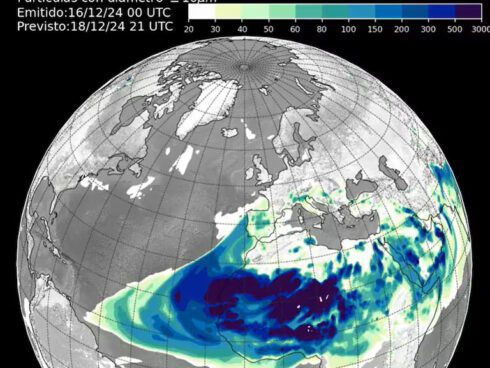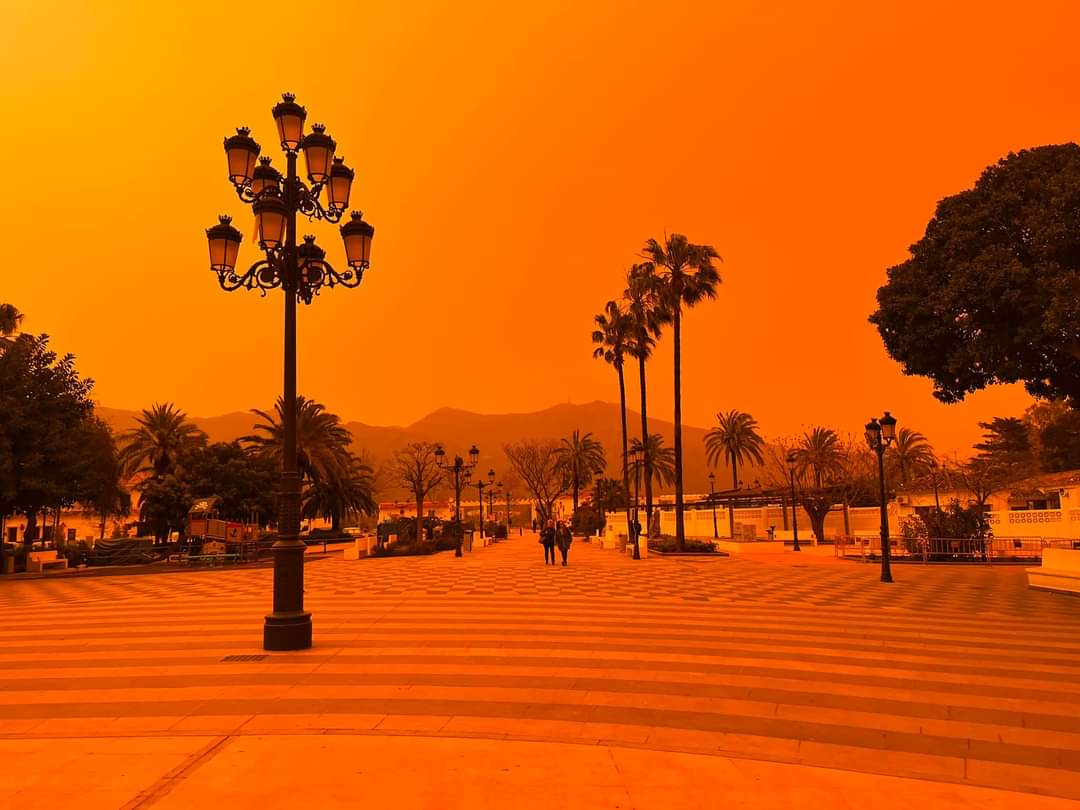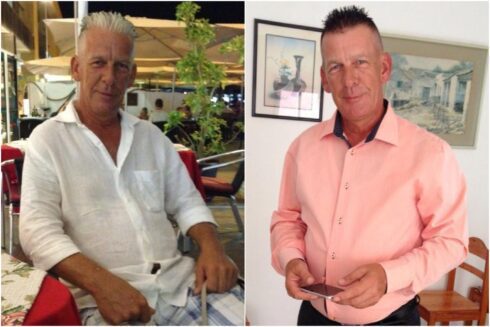A MASS of air full of dust from the Sahara has enveloped the Canary Islands after the passage of the Atlantic storm Dorothea.
It may also end up causing problems on parts of the Spanish mainland.
The so-called calima means that levels of suspended particles in Lanzarote and Fuerteventura are close to the superhaze of 2020 and most of the islands have reduced visibility of up to 3,000 meters.
READ MORE:

All of the Canary Islands have been on a yellow warning for haze from Tuesday.
A calima is also known as ‘blood rain’ as it has the remarkable effect of casting a reddish hue over the Spanish skies, and once the rain has settled it leaves a fine red coating over cars, streets and the land in general.
Sometimes inadequately translated as ‘haze’, it is a weather phenomenon marked by a dense concentration of dust, sand, and ash from the Sahara Desert trapped among rain clouds.
However, it can also be produced by less natural causes, such as the burning of fossil fuels, industry or agriculture.
Unlike fog, which consists of water droplets, the calima comprises solid particles which can travel vast distances carried by the wind.
It can also have the added effect of potentially altering local climate conditions by trapping heat in the atmosphere.
The origins of a calima are multifaceted, involving natural processes such as sandstorms in arid regions and volcanic eruptions, as well as human-induced factors from factories and agricultural activities.
The blood rain has a nuisance value of dirtying cars, windows, patios and terraces, but there are things you can do to clean the sand away.
One of the most effective methods to clean away the dust is to simply use lots of water.
Hosing down a car is effective, and a high pressure cleaning- if possible- works in tricky to access places such as corners.
Blasting some pressurised air is another tool in the armoury, but the sand can still remain in the environment.
Another tip is to use warm water mixed in with soap or detergent to clean the dust off window panes, car windscreens, and outdoor furniture.
You should use a damp fibre cloth on surfaces that are susceptible to scratching like polished metals.
A good sweep with the cloth is recommended and after each motion, you should rinse it out to avoid any sand remaining on it that could cause an unwanted scratch.
Outdoor areas such as terraces, balconies and patios are the spaces that accumulate the most dirt when a calima strikes.
In such instances, it is best to sweep the dust repetitively, without wetting to avoids the formation of a muddy paste which makes the use of cleaning products counter-productive.
Once well swept, it is recommended to mop the floor intensively with a product suited to its type.
Before getting down to the mopping, make sure the surface is free of dust so that the mop doesn’t get too full of sand.







